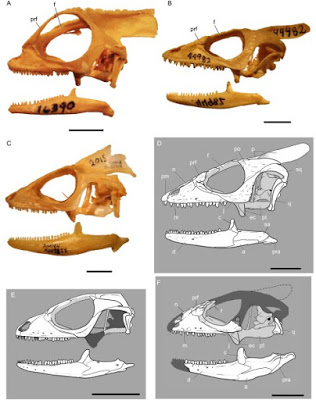
A newly-discovered, 48-million-year-old fossil, known as a “Jesus lizard” for its ability to walk on water, may provide insight into how climate change may affect tropical species, according to a study published July 1 in the open-access journal PLOS ONE by Jack Conrad from American Museum of Natural History.
Modern relatives of the Jesus lizard live in an area stretching from central Mexico to northern Colombia, flourishing in the higher temperatures found at the equator. Members of various animal, plant, fungal, and other clades currently confined to the tropics or subtropical areas are often found in fossil records at mid-to-high latitudes from warm periods in Earth history.
The 48-million-year-old fossil, recovered from the Bridger Formation in Wyoming, is the first description of a new species, named Babibasiliscus alxi by the author, and may represent the earliest clear member of the Jesus lizard group, Corytophanidae. This group, which includes iguanas and chameleons, remains poorly understood, due to the small number of fossils available for study.
The author suggests Babibasilscus alxi was likely active during the day and spent a lot of time in trees. A ridge of bone on the skull gave it an angry look while providing shade for its eyes. Each small tooth had three points suitable for eating snakes, lizards, fish, insects and plants, but with a fairly large cheekbone, the lizard may have enjoyed larger prey items as well.
The author suggests that the two-foot long casquehead lizard Babibasiliscus alxi, may have skimmed the surfaces of lush, watery habitats in Wyoming, which at the time probably had a climate matching today’s tropics.
“Given our current period of global climate fluctuation, looking to the fossil record offers an important opportunity to observe what is possible,” said Jack Conrad, “and may give us an idea of what to expect from our dynamic Earth.”
Reference:
Conrad JL. A New Eocene Casquehead Lizard (Reptilia, Corytophanidae) from North America. PLoS ONE, 2015 DOI: 10.1371/journal.pone.0127900
Note: The above post is reprinted from materials provided by PLOS.










